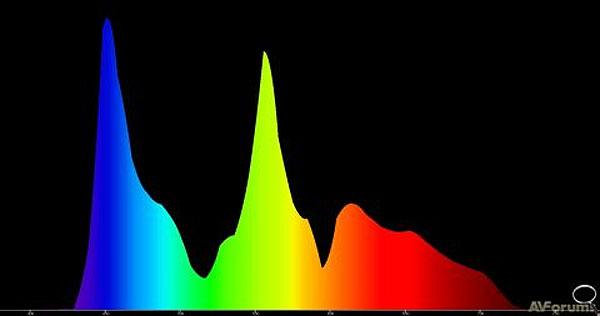Projector Lamp Longevity

Sotiris Filippakopoulos
Before answering your question, let me start with some projector-lamp basics. The light from all projector lamps exhibits an inherent spectrum, with some colors stronger than others. As you can see in the graph above, the UHP (ultra-high pressure) lamps used in most home-theater projectors have strong peaks in blue and green and a smaller peak in red. To compensate for the uneven spectrum of UHP lamps, most home-theater projectors include filters to lower the peaks in blue and green.
There are several factors that can shorten a lamp's lifespanfor example, frequently turning the projector on and off for short periods and/or operating it in a relatively high-temperature environment with less-than-adequate ventilation. As the lamp ages, its overall brightness falls by as much as 50 percent after only one third of the lamp's expected lifespan. Because of this, Imaging Science Foundation president Joel Silver recommends using a conservatively sized screen and the projector's low-power lamp mode for the first third of the lamp's life, then switching to high-power mode for the remaining lifetime.
As for color shifts, Silver says that they do occur as a lamp ages, but they are not drastic under normal conditions and can usually be corrected with proper calibration. Video consultant Joe Kane says he has never seen the color of a lamp change significantly over a normal lifespan, so if your lamp has changed color dramaticallyespecially in as little as 250 hoursit's probably defective.
Alternatively, it might be something else in the projector. Has the brightness decreased significantly over 250 hours? If not, Kane suggests it might not be the lamp at all.
When replacing a lamp, Silver warns against off-brand models, which often fail after a very short period. Stick with a lamp provided by the manufacturer or a known brand such as Philips, even if it's more expensive.
Silver also stresses the importance of using an uninterruptible power supply (UPS) with lamp-based projectors. Without a UPS, if the power goes out while the projector is on, the lamp won't cool down properly, which will drastically shorten its life.
I'd like to hear from other projector owners about their experiences with lamp longevity. What projector do you have, and how long does a lamp typically last before you need to replace it? Does the color change significantly over that time?
If you have an A/V question, please send it to askhometheater@gmail.com.




























































